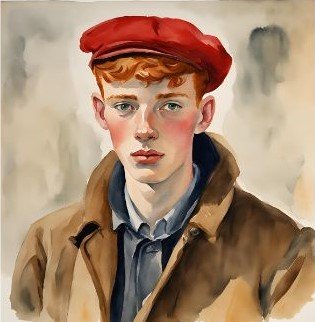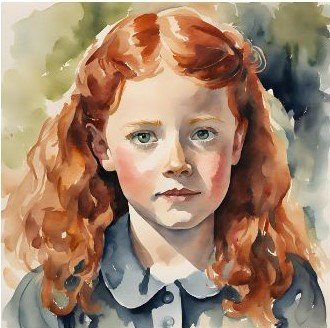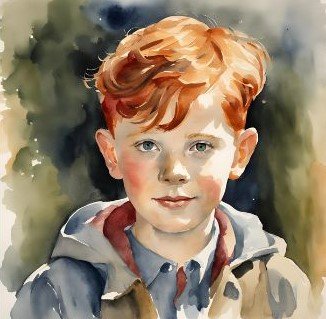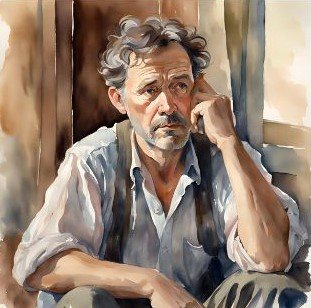Introduction
Have you ever felt like you’re stuck in the middle—not quite a kid, but definitely not an adult? That’s exactly how Holden Caulfield feels in The Catcher in the Rye. J.D. Salinger takes us into the mind of a teenager who’s trying to figure out life, love, and where he belongs, all while feeling like the world is full of “phonies” he can’t stand.
The story is set during a time when the U.S. economy was booming, but Holden doesn’t fit into the shiny, perfect picture of the American Dream. He’s a troubled teen dealing with the loss of his younger brother, Allie, and he just can’t let it go. Obsessed with protecting innocence and mistrustful of adults, Holden wanders through New York City, searching for something—anything—that makes sense to him.
Did you know this book is often compared to The Adventures of Huckleberry Finn by Mark Twain? While Huck floats down the Mississippi River, Holden roams the streets of New York, lost in his thoughts. Both books explore young people trying to navigate a world they don’t trust, and critics have even called Holden a “modern Huck Finn.” Despite being one of the most banned books in the U.S., The Catcher in the Rye has remained a classic that refuses to fade away.
This book is a must-read for a reason. It’s raw, real, and does an amazing job capturing the chaos of being a teenager. In fact, it was one of the first novels to dive deep into the emotions of a messy teenage mind. If you’ve ever felt like the world doesn’t understand you, The Catcher in the Rye just might be the book that does.
Plot Summary
Holden Caulfield, a 16-year-old with a lot on his mind, starts the story by getting expelled from Pencey Prep, yet another boarding school that didn’t work out. Instead of going straight home to face his parents, he takes off to New York City for a few days. What follows is a whirlwind of strange encounters, heartfelt moments, and plenty of inner monologues.
It is important to understand that Holden’s wandering isn’t just physical—it’s emotional, too. He feels disconnected from the world around him, convinced that most people are “phony.” As he roams the city, he reflects on his younger brother Allie’s death, struggles to connect with old friends and strangers, and dreams of protecting children from the harsh realities of life.
At its heart, this is Holden’s battle with himself. He wants to keep the world’s innocence intact, but he’s also trying to figure out where he fits in a world he doesn’t fully trust. It’s a story that’s both raw and moving and one you won’t forget anytime soon.
Key Characters
Holden Caulfield

Holden Caulfield is our moody, sharp-tongued protagonist. He’s 16, cynical, and incredibly sensitive, all while navigating a messy, complicated world. Holden is mourning the death of his little brother, Allie, whose memory he holds onto like a life raft. He’s also terrified of growing up and dreams of a world where he can save kids from the harsh realities of adulthood—his version of being “the catcher in the rye.”
Phoebe Caulfield

Phoebe is Holden’s younger sister and the bright spot in his otherwise gloomy outlook on life. She’s sharp, funny, and everything Holden wishes he could protect. To Holden, Phoebe represents the innocence and purity he wants to preserve in the world, making her one of the few people he truly trusts and loves.
Allie Caulfield

Allie, Holden’s younger brother, passed away three years ago, on July 18, 1946, from leukemia. Allie was kind, brilliant, and full of life, and his death left a permanent mark on Holden. Memories of Allie are both comforting and heartbreaking for Holden, fueling his obsession with innocence and his struggle to move forward.
Mr. Antolini

Mr. Antolini, one of Holden’s former teachers, tries to give him advice about life. At first, his guidance seems thoughtful and helpful, but things take an uneasy turn, leaving Holden confused and even more wary of adults.
Character Dynamics
The relationships in Holden’s life reveal a lot about him. His bond with Phoebe shows his softer, protective side, highlighting how much he values innocence. On the flip side, his interactions with adults—like his parents or Mr. Antolini—often reveal his deep distrust and sense of alienation. His father, a corporate lawyer, and his mother, still grieving Allie’s death, struggle to connect with Holden. Unable to handle him, they send him off to boarding school, creating even more distance.
Holden’s inability to connect with most people makes him relatable—and, at times, frustrating. His struggles show just how complicated it can be to navigate loss, trust, and growing up.
What to Look For While Reading
Themes
Themes are everywhere in The Catcher in the Rye. One of the biggest is alienation and loneliness. Holden feels like he’s on the outside of everything, unable to connect with people or find his place in the world. This ties into another major theme: innocence vs. corruption. Holden clings to the idea of protecting children from the harsh realities of adulthood, even as he struggles to deal with his own growing pains. The book also dips into mental health, exploring Holden’s grief, depression, and inner turmoil.
Symbolism
Keep an eye out for symbolism, too. The title itself, “the catcher in the rye,” reflects Holden’s dream of saving kids from falling into the world of adulthood. Then there’s his iconic red hunting hat, which acts as his quirky armor against a world he doesn’t understand. And let’s not forget the Museum of Natural History, a place Holden loves because it never changes, offering a break from the chaos of life. Finally, read carefully what was written about the Carousel. While watching Phoebe ride the carousel, Holden experiences a shift. He realizes that while he can’t protect her (or anyone else) from growing up, he can still find joy in her happiness. This moment suggests he’s beginning to come to terms with the inevitability of change. What this represents is acceptance and growth.
Narrative Styles
The way this story is told—straight from Holden’s mouth—is something that really stands out. It’s called first-person stream-of-consciousness, and it’s like sitting down with a friend who’s spilling everything on their mind with no filter. Holden’s narrative is super casual, full of slang, and packed with random tangents that show just how messy and jumbled his thoughts are.
Sure, his voice might get on your nerves sometimes—he’s sarcastic, opinionated, and a little all over the place—but that’s exactly what makes the book feel so raw and real. You’re not just reading about Holden; you’re practically living inside his head.
If you’re into this kind of storytelling, you might recognize a similar style in the works of Marcel Proust or Virginia Woolf. Like Holden, their characters’ thoughts flow freely, jumping from one idea to the next, capturing the complexity of how we actually think and feel. Salinger gives this literary technique a unique twist by making it sound like the voice of an everyday, disillusioned teen.
Takeaway Lessons
Did you know that between 1945 and 1950, the U.S. Gross National Product (GNP) jumped from $200 billion to $500 billion? This was a time of massive societal change. Parents were chasing the “American Dream,” working long hours and focusing on building financial success. While this brought stability, it often came at a price: emotional distance from their children.
Holden Caulfield is a clear example of this fallout. He’s grieving the loss of his younger brother, Allie—a loss that completely shook his world. Allie’s death wasn’t just sad for Holden; it left him feeling unstable, angry, and unable to move forward. His obsession with protecting innocence, especially in kids, feels like his way of holding on to something he’s already lost. Yet, instead of getting the support he needs, his parents send him to boarding schools, which seem more like a way to manage him than to help him heal.
So, what happens? Holden is left to figure it all out on his own, wandering the dangerous streets of New York with way too much cash for a teenager and no adults he feels he can trust. His reaction to Mr. Antolini’s behavior, whether it’s a misinterpretation or not, shows how deeply he distrusts adults. To Holden, grown-ups symbolize betrayal, hypocrisy, and danger—a stark contrast to the innocence he desperately tries to protect.
Holden’s story is messy, relatable, and packed with lessons. It reminds us that adolescence is tough, no matter the era. His struggles with grief, identity, and connection resonate with anyone who’s ever felt lost or unsure of their place in the world.
The biggest takeaway? Empathy matters. Even though Holden spends much of the book calling the world “phony,” his vulnerability reveals how much he truly cares—especially about protecting kids. His desire to shield innocence is both touching and heartbreaking. But it also raises important questions: Is this desire noble, or is it Holden’s way of avoiding his own fears about growing up? How does his belief that adults are “phony” shape his relationships?
By the end of the book, when Holden starts to understand that letting go is part of growing up, it’s hard not to feel emotional. That realization hit me hard—almost made me cry, actually.
Holden’s journey isn’t about finding neat, easy answers. It’s about learning to live in life’s gray areas, which, let’s face it, is what growing up is all about. Even though it’s been ages since I was a teenager, I can still feel Holden’s pain and confusion. His story is a powerful reminder of how hard it is to navigate the world when you’re caught between innocence and adulthood.
Final Recommendation
If you’ve ever felt lost, misunderstood, or like the world just doesn’t “get it,” this book is for you. Teenagers, young adults, and fans of coming-of-age stories will find a lot to love here. It’s also a fascinating dive into the mind of a flawed but relatable character. The Catcher in the Rye isn’t just a book; it’s an experience. Step into Holden’s world, and you might just leave with a new perspective on your own. Give it a read—you won’t regret it!